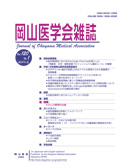

Journal of Okayama Medical Association
Published by Okayama Medical Association<Availability>
Full-text articles are available 3 years after publication.
Permalink : http://escholarship.lib.okayama-u.ac.jp/16535
岡大式Mark-Ⅱ人工膝関節のX線学的研究 ―特に臨床成績との関連について―
十川 秀夫
岡山大学整形外科学教室
発行日
1984-10-30
抄録
From 1975 to 1980, cementless total knee replacement (Mark-Ⅱ, Okayama university type) has been performed in 66 patients, including 22 with rheumatoid arthritis and 8 with osteoarthritis. A radiographic follow-up study was made on 30 of these cases (45 knees). The average follow-up time was 5.4 years (from 3 to 8 years). The radiographic findings were compared with clinical assessment (Three Universities' Criteria). There was no direct correlation between clinical assessment and radiographic findings, especially in the areas of pain relief and radiographic alignment. In the radiographic follow-up, bony sclerosis spreading into the medial condyle of the tibia was found in 11 cases (24 percent). Medial tilting of the tibial component and varus deformity was significantly greater in the medial sclerosing group than in the non-sclerosing group. The overall score, including pain and lateral instability, was less in the medial sclerosing group. It was indicated that medial tilting of the tibial component and varus deformity have an indirect correlation with the clinical results of total knee replacement.
キーワード
人工膝関節
X線学的評価
臨床評価
慢性関節リウマチ
変形性膝関節症
ISSN
0030-1558
NCID
AN00032489
